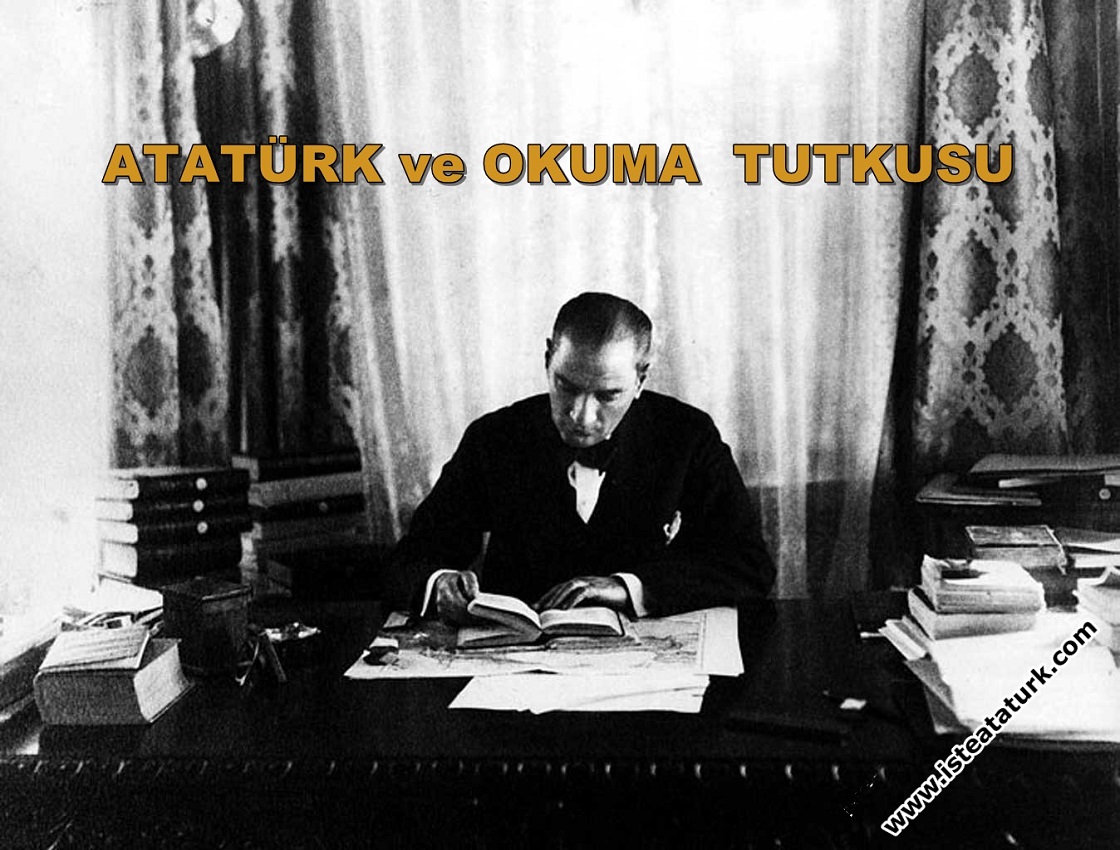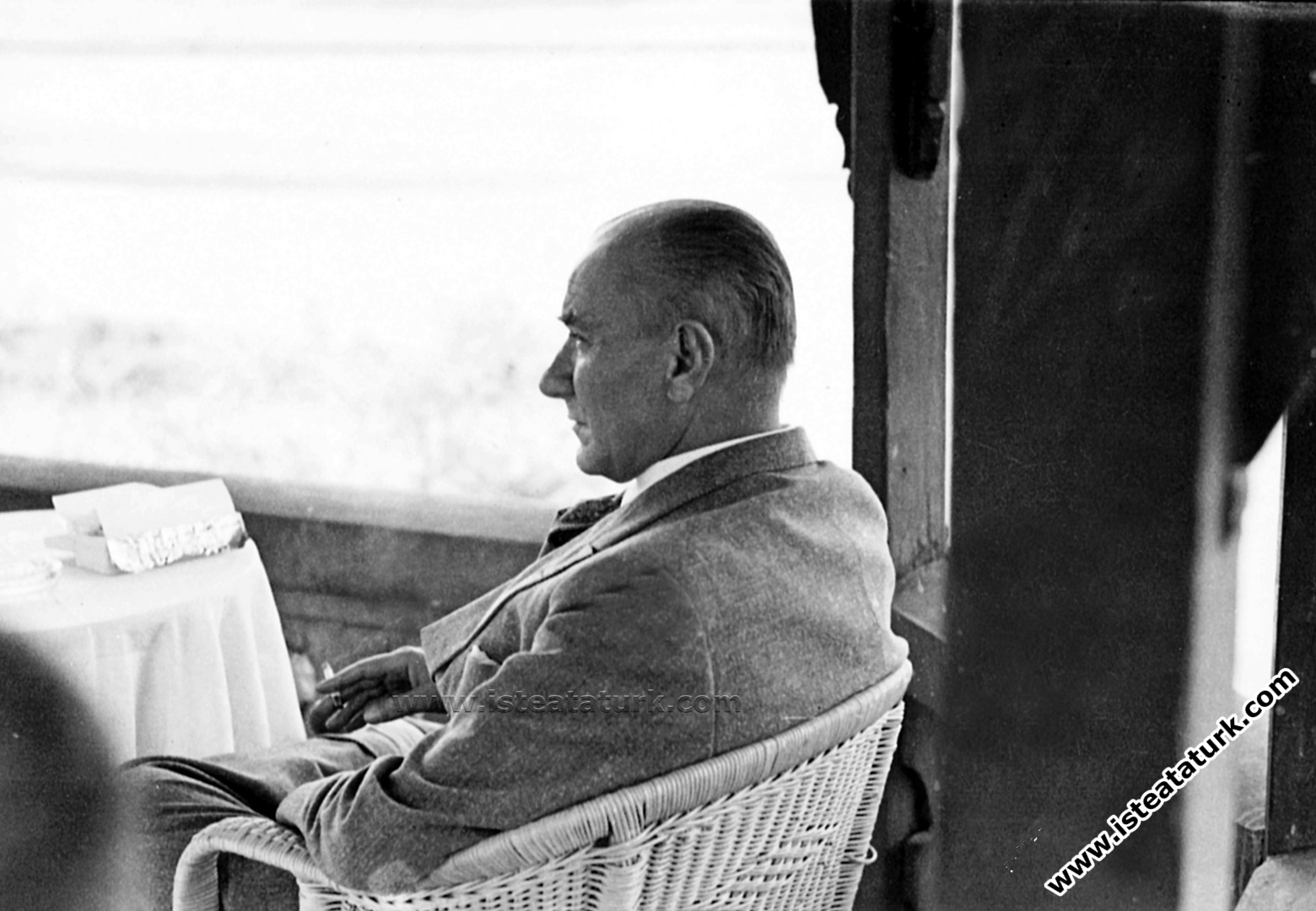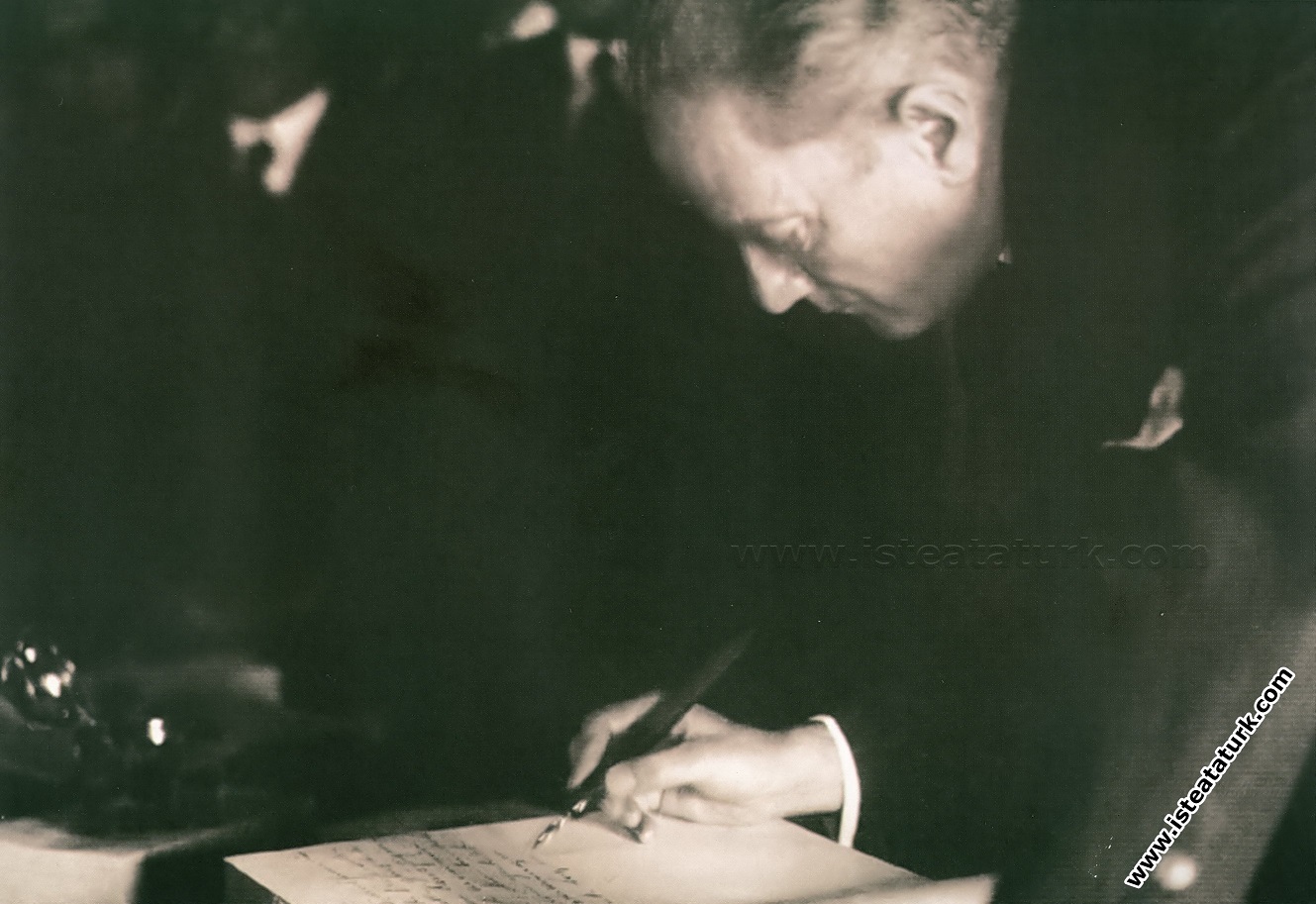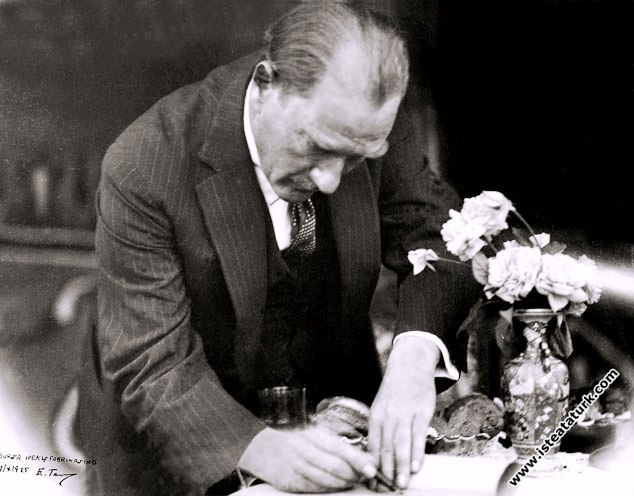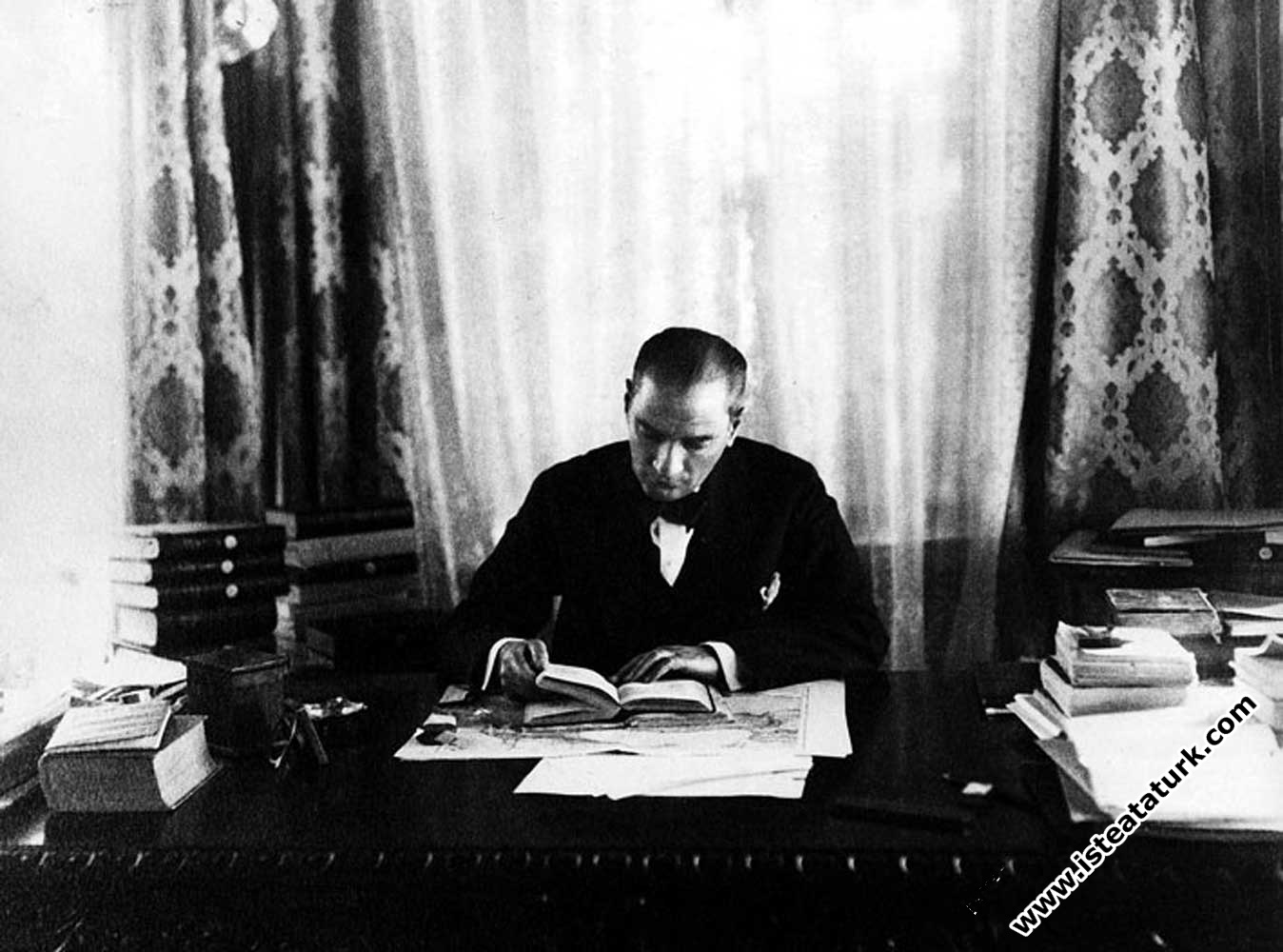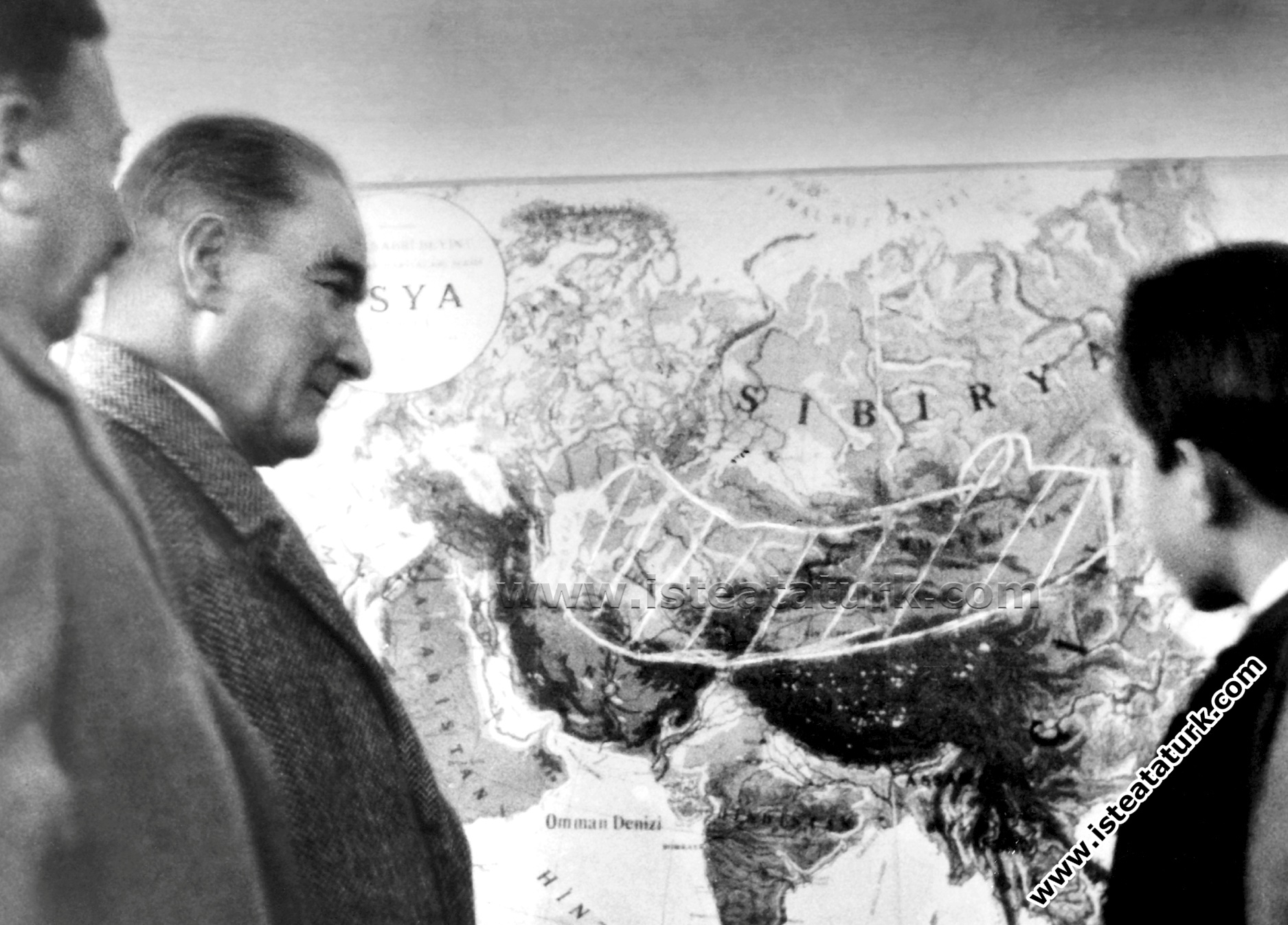
Atatürk's Thesis on History: Central Asia as a Cradle of Civilization
Character Size
"Y"A high culture cannot stay in the nation that owns it; it shows itself in other nations as well; it covers all continents" Mustafa Kemal Atatürk
Ataturk's Thesis on History: Central Asia as a Cradle of Civilization
The paper I will present before you is titled “Atatürk's Thesis of History: Central Asia as a Cradle of Civilization”. However, first of all, I must state that the purpose of this statement is neither to enter into a discussion of whether a thesis is true or false, nor to attempt to prove something unknown.
My main point is to emphasize the importance Atatürk attached to the ideal of humanity and love for humanity, on the occasion of this thesis, which seeks common points in the cultural heritage of humanity and calls for unity by emphasizing that all people have a share in the common cultural heritage. I would especially like to ask you to evaluate the thesis that is the subject of the notification in this respect.
Atatürk is a leader who gave great importance to Turcology studies and pioneered these studies in Turkey, which focused on history and language. In addition to his military service, state founding and revolutionism, he also had the identity of a man of ideas. In addition to writing the history of his own time, which is called the "Turkish Revolution", he wanted to write the real history of his nation from the beginning to the present, and to show the place of this history in the history of the world. In this respect, we tend to interpret the "Atatürk and Kemalism" studies in Turkey as a part of Turcology.
One of the biggest cultural revolutions of the young Turkish Republic, which was founded in 1923, following a great war of independence, was national history studies and history thesis. The “Turkish History Thesis”, which was matured between 1930 and 1937, witnessed important scientific studies in Turkey in those years. In the First and Second Turkish History Congresses convened in 1932 and 1937, this thesis was largely discussed with the participation of foreign scientists, and some facts were tried to be revealed.
The national character of this thesis was to seek the roots of the Turkish nation in history, to show the true course of Turkish history and its development paths. Because this thesis was based on the understanding of "history of the nation", which accepts the Turk as the main element, instead of the usual "history of the nation".
Before Atatürk, Turkish history was considered as the history of a dynasty and started with the establishment of the Ottoman State; or melted down in the history of Islam, but the role played by the Turks in this history was not sufficiently specified due to the understanding of the ummah. The history of the Turks before the Ottomans, especially before they accepted Islam, and their rich culture and literature in this period were ignored. Seljuk historians, like Ottoman historians, left the previous part of Turkish history in the dark, and did not go back from Islamic history.
However, it was necessary to establish Turkish history on the right foundations, to examine its true course and development paths starting from Central Asia, and to determine the role of Turks in world history and their place in the history of civilization on this path.
It should also be emphasized that in the Ottoman Empire, in the XIX. The nationalist movements that started in the 19th century, the independence of some nations that left this empire and the establishment of independent states, inevitably led to the awakening of a national history consciousness in the Turkish element, which was the core of the empire. XIX. The "Turkism" movement against Ottomanism, Islamism and Westernism among some Turkish intellectuals at the end of the century arose from such an awakening, such a historical necessity. For this reason, the studies in the field of national history, which we are talking about, had started, albeit partially, as of the Tanzimat; however, XX. He became Atatürk in the 19th century.
Atatürk's history thesis had a universal aspect besides its national character. Because Atatürk's view of history and interpretation of history was not only limited to his own nation and his own history, but also had universal dimensions to cover the entire community of nations, that is, the history of the world. He was also looking for the sources of human culture within these universal dimensions, and wanted to make all nations share and honor in the common cultural heritage of humanity. Atatürk's thesis of history originated from this humanistic view in the universal sense.
When we look at the history of humanity, we see that four civilizations followed each other in a chain. These are respectively: 1. Ancient Egyptian and Mesopotamian civilizations, 2. Classical Greek civilization, 3. Medieval Islamic civilization, 4. Western European civilization.
Were there not sources outside of these four successive civilizations? Where were they? Atatürk's history thesis sought answers to these questions in Central Asia in the light of archaeological, anthropological and ethnographic documents. Because, the rich prehistoric civilization remains in the lower layers of the Central Asian lands, and the rich traces of handicrafts belonging to the prehistoric ages in archaeological excavations in these regions, showed that these lands were hiding a cultural heritage going back thousands of years.
According to this thesis, a prehistoric civilization developed in Central Asia, and spread to Mesopotamia, Anatolia, Egypt and Europe with the migrations caused by geographical necessities, experiencing the Stone Age, Bronze Age, and the mining age, and witnessed new civilization stages in these places.
Again, according to this thesis, the roots of the first prehistoric inhabitants of Anatolia were also in Central Asia. Archaeological excavations in Anatolia and the findings obtained in these excavations showed that there were similarities between the Anatolian civilizations thousands of years ago and the civilizations of Central Asia.
The reason for the prehistoric migration in Central Asia was the change in climatic conditions. Central Asia was located on a geographical belt that received less rainfall in terms of climatic conditions. In an early prehistoric age, the fertile Central Asian highlands began to dry up, and the people here were forced to migrate to more favorable regions.
The human sea on the Asian continent had migrated from north and south to west during centuries of prehistory, bringing the blessings of Central Asian civilization to these new lands. These masses of people who came from Asia knew how to cultivate the land, to separate harmful and harmless plants, to store grain against famine, to tame animals such as sheep, goats, oxen, pigs, dogs, horses, to use gold, silver and copper. Thus, these human masses, who passed from the north of the Black Sea, from Anatolia, from Egypt to Europe and the Balkans, also affected the “neolithic European Civilization”.
In this respect, Central Asia had the distinction of being one of the cradles of civilization in the history of humanity; because in the civilizations that followed it, it was impossible not to see its traces more or less and not to sense its effects.
With this thesis, Atatürk called on humanity to unite around common ideals; He emphasized that nations can unite in universal cultural values with common roots, without losing their independence, national characteristics and national cultures, apart from all kinds of imperialist views, and that various tribes have a share in these cultural values. In this way, nations would not forget the existence of a culture that united them thousands of years ago in human history, had common roots, and shared the dignity of all humanity. This common cultural heritage had to connect the continents and bring people closer to each other regardless of color, race or religion. The rise of humanity, the realization of the ideal of humanity depended on keeping this consciousness alive. As a matter of fact, his words underline this point:
Atatürk says: "Nations are the true owners of the land they occupy, but they are also on that land as representatives of humanity. They both benefit from the wealth resources of the land, and therefore they are obliged to make all humanity benefit”. Because, according to Atatürk: “A high culture cannot remain in the nation that owns it; it also manifests itself in other nations; it extends to all continents”. Here, the prehistoric Central Asian civilization could not stay outside of this rule, and it carried the elements of culture and civilization it hosted to other parts of the world through expansion and migration.
I would like to touch upon this point again when I conclude the statement: Atatürk's thesis of history never stems from an imperialist thought, a chauvinistic understanding, and concerns such as seeking a single origin for humanity in terms of history, race and language. What Atatürk wanted to point out with this thesis is that a civilization that started in Central Asia in prehistoric times spread to other parts of Asia, Anatolia, and Europe by means of migration and caravan routes, thus carrying its effects to these new regions. In this sense, Central Asia shows the feature of being one of the oldest cradles of culture and civilization of humanity.
To share all humanity in the chain of universal civilization; To state that there are elements that all humanity has in common in today's world civilization should certainly be a thought that befits humanity in terms of idealism as well as realism and nourishes the love of humanity. In this respect, Atatürk represents an insurmountable greatness before the history of humanity.
He himself says: “The only means that will make people happy is the movement and energy that brings them closer to each other, makes them love each other, and provides for their mutual material and spiritual needs. The real happiness of humanity in world peace will only be possible with the increase and success of these high ideal travelers.
In a decision taken on the 100th anniversary of Atatürk's birth, UNESCO stated: “Atatürk is an extraordinary pioneer of the ideal of permanent peace and the spirit of mutual understanding among the nations of the world; All his life, he worked for the opening of an era of harmony and cooperation that does not recognize any color, religion or race discrimination among people.”
Indeed, Atatürk, long before the establishment of UNESCO, “The citizens of the world should be educated to avoid envy, greed and hatred”. he was saying. “The well-being of humanity as a whole must replace hunger and oppression,” he added.
The effort to show that there are common points and common resources in the cultural heritage of humanity was a part of Atatürk's efforts to bring all the people living in our world closer to each other and to endear them more. At the level of culture and civilization that the world has reached today, various continents and innumerable tribes had their share in the known side that has not yet been sufficiently enlightened.
According to Atatürk, kinship awareness should have replaced hostilities. Racist and chauvinistic approaches between continents and nations should have been replaced by some common values shared by all humanity. It should not be forgotten that all cultures, all civilizations owe something to others.
The roots of Atatürk's principle of “Peace at home, peace in the world” stems from such a humanistic thought and such an ideal in terms of its cultural aspect as well as its political aspect.
Prof. Dr. Utkan Kocaturk*
* Former Deputy Chairman of Atatürk Culture, Language and History High Institution and Former President of Atatürk Research Center
Source: ATATÜRK ARAŞTIRMA MERKEZİ DERGİSİ, Sayı 9, Cilt III, Temmuz 1987
